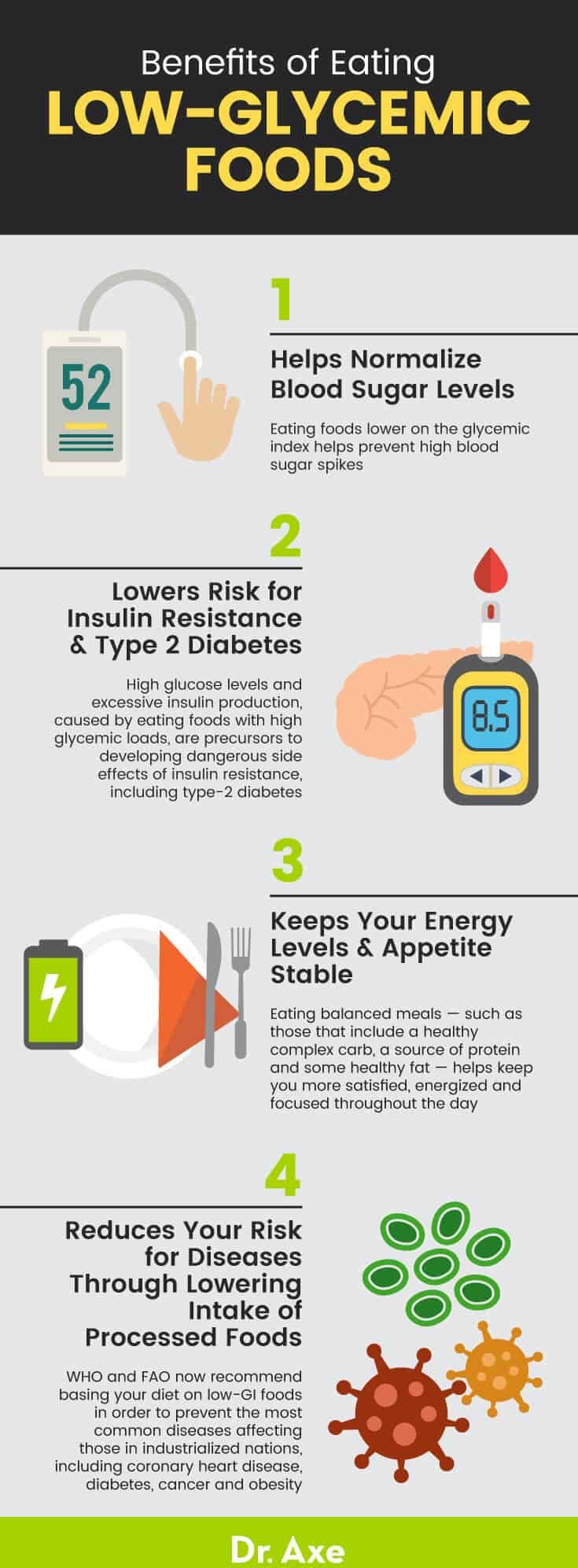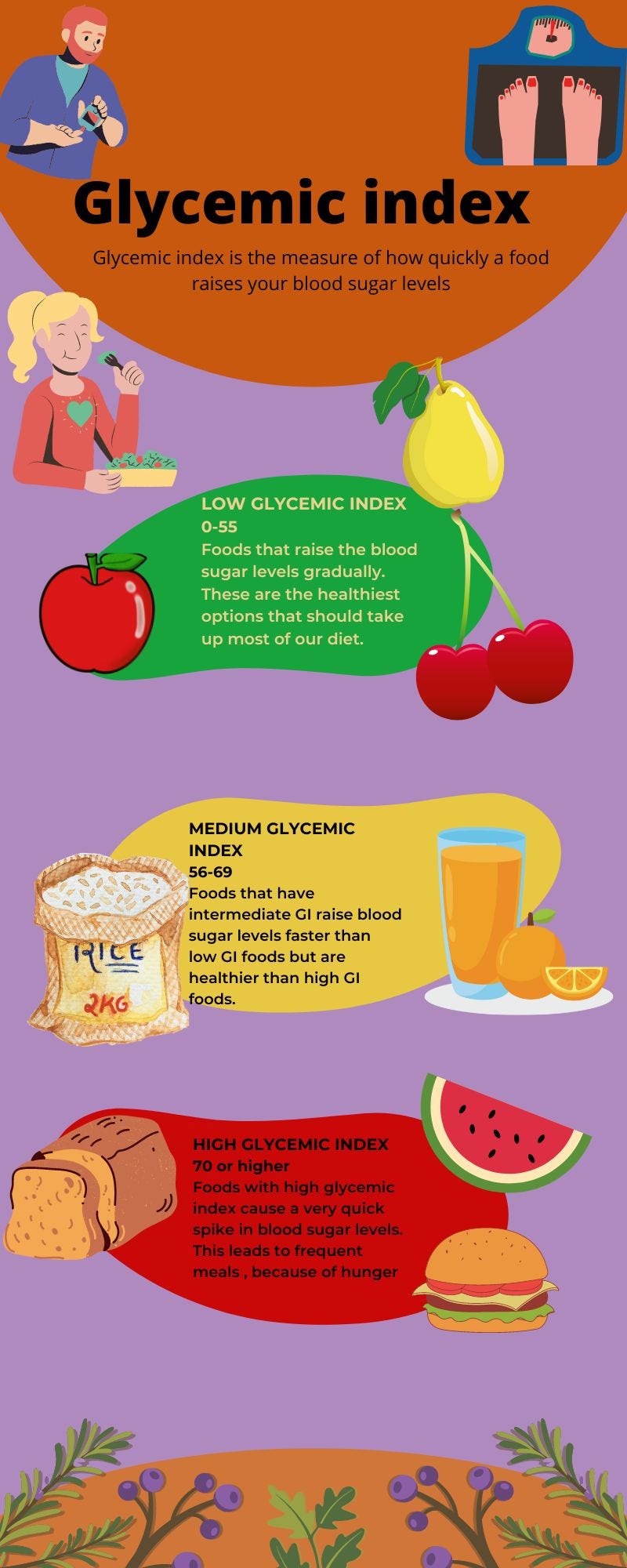What Is The Glycemic Index And How Does It Affect Blood Sugar Levels?

The Glycemic Index (GI) is a measurement that ranks how much a specific food increases blood sugar levels. It is especially important for individuals with conditions like diabetes, as high blood sugar can have detrimental effects on their health. Foods with a high GI will cause a rapid spike in blood sugar levels, while foods with a low GI will have a slower and more controlled impact. By understanding the GI of various foods, individuals can better manage their blood sugar levels and make healthier dietary choices.
Understanding The Glycemic Index And Its Impact On Blood Sugar
The Glycemic Index (GI) is a tool used to measure how specific foods affect blood sugar levels. It ranks carbohydrates on a scale from 0 to 100 based on how quickly they raise blood sugar levels. Foods with a high GI value, such as white bread or sugary drinks, cause a rapid spike in blood sugar levels. On the other hand, foods with a low GI value, like whole grains or vegetables, have a slower and more controlled impact on blood sugar. By understanding the GI of foods, individuals can make more informed choices to manage their blood sugar levels better.
Factors Influencing The Glycemic Index Of Foods
The Glycemic Index (GI) of a food can be influenced by several factors, including the following:
- Ripeness and processing: Fruits and vegetables that are riper or have been processed generally have a higher GI. For example, a ripe banana will have a higher GI compared to a green banana.
- Cooking and preparation methods: The way a food is cooked or prepared can affect its GI. Foods that are cooked for a shorter period of time or eaten raw tend to have a lower GI compared to those that are cooked for longer periods or heavily processed.
- Fiber content: Foods high in fiber tend to have a lower GI because fiber slows down the digestion and absorption of carbohydrates. Whole grains, legumes, and certain fruits and vegetables are examples of high-fiber foods with a lower GI.
- Fat and protein content: Foods that contain higher amounts of fat and protein generally have a lower GI. This is because fat and protein slow down the digestion and absorption of carbohydrates.
- Food combinations: Combining high-GI foods with low-GI foods can help moderate the overall GI of a meal. For example, pairing carbohydrates with protein or fat can lower the overall GI of the meal.
It is important to consider these factors when selecting and preparing meals to manage blood sugar levels effectively.
The Role Of Chicken In Blood Sugar Regulation

Chicken plays a significant role in blood sugar regulation due to its high protein content. Protein-rich foods like chicken stimulate the release of insulin, which helps in the metabolism and absorption of glucose from the bloodstream into the cells. This insulin response prevents a rapid spike in blood sugar levels after a meal. Additionally, chicken is low in carbohydrates, which further helps in maintaining stable blood sugar levels. Incorporating chicken into a balanced meal with vegetables, whole grains, and legumes can promote effective blood sugar management.
The Impact Of Chicken Consumption On Blood Sugar Levels
Chicken consumption has a minimal impact on blood sugar levels due to its low carbohydrate content and high protein content. Unlike high-carbohydrate foods that can cause a rapid spike in blood sugar, chicken helps to slow down the release of glucose into the bloodstream. The protein in chicken stimulates the release of insulin, which promotes the absorption and metabolism of glucose by the cells. This insulin response helps to maintain stable blood sugar levels and can be beneficial for individuals managing diabetes or those looking to prevent blood sugar spikes.
Comparing Chicken To Other Protein Sources In Terms Of The Glycemic Index
In terms of the Glycemic Index (GI), chicken is considered to have a low impact on blood sugar levels compared to other protein sources. Red meat, for example, tends to have a higher GI due to its higher fat content. Plant-based protein sources such as beans and lentils have a moderate GI, while fish and seafood have a low GI similar to chicken. Therefore, when considering blood sugar regulation, chicken can be a favorable protein choice due to its lower GI compared to other animal-based proteins.
Does Chicken Raise Blood Sugar Levels?

It is important to note that chicken does not raise blood sugar levels significantly. Due to its low glycemic index (GI), chicken has little to no effect on blood sugar levels. The absence of carbohydrates in chicken makes it a suitable protein choice for individuals concerned about blood sugar regulation. While other protein sources, such as red meat, may have a higher GI and can potentially impact blood sugar levels, chicken’s low GI makes it a favorable option for maintaining stable blood sugar levels. Therefore, incorporating chicken into your meals is unlikely to cause blood sugar spikes.
Exploring The Effects Of Chicken On Blood Sugar Spikes
Chicken has minimal effects on blood sugar spikes due to its low glycemic index (GI). The absence of carbohydrates in chicken means that it has little to no impact on blood sugar levels. When consumed as part of a balanced meal plan with vegetables and whole grains, chicken can help maintain stable blood sugar levels. The protein in chicken also helps regulate blood sugar rises when eaten in combination with other foods. Therefore, incorporating chicken into your diet is a favorable option for individuals concerned about blood sugar management.
Studies And Research On The Glycemic Index Of Chicken
Several studies have investigated the Glycemic Index (GI) of chicken to understand its impact on blood sugar levels. One study published in the American Journal of Clinical Nutrition found that chicken had a low GI, indicating minimal effects on blood sugar spikes. Another study in the Journal of Nutrition and Metabolism compared the GI of different protein sources and found that chicken had a lower GI compared to beef and fish. These findings suggest that consuming chicken as part of a balanced meal plan can help maintain stable blood sugar levels.
Tips For Managing Blood Sugar Levels When Consuming Chicken

When consuming chicken, there are several tips to help manage blood sugar levels effectively.
- Balance meals: Pair chicken with a variety of vegetables, whole grains, and legumes to add fiber and slow down the digestion process, preventing blood sugar spikes.
- Watch portion sizes: Control portion sizes of chicken to avoid consuming excessive protein, which can still stimulate insulin release.
- Choose healthy cooking methods: Opt for baking, grilling, or roasting chicken instead of frying to minimize added fats and promote a lower glycemic response.
- Monitor overall diet: Incorporate a well-rounded diet that includes a mix of protein sources, such as plant-based proteins, to diversify nutritional intake and support blood sugar control.
By following these tips, individuals can enjoy the health benefits of chicken while effectively managing blood sugar levels.
Balancing Meals With Chicken To Prevent Blood Sugar Spikes
To prevent blood sugar spikes when consuming chicken, it is important to balance meals by pairing chicken with a variety of vegetables, whole grains, and legumes. These additions provide fiber, which slows down the digestion process and helps regulate blood sugar levels. Including these nutrient-dense foods alongside chicken not only enhances the taste and nutritional value of the meal but also helps to maintain stable blood sugar levels. It is important to monitor portion sizes and to prioritize a well-rounded diet that includes a mix of protein sources.
Healthy Cooking Methods For Chicken To Maintain Its Low Glycemic Index
To maintain the low Glycemic Index of chicken, it is important to choose healthy cooking methods. Here are some tips:
- Grilling: Grilling chicken helps to retain its natural flavors and juiciness without adding extra fats or oils.
- Baking: Baking chicken in the oven is another healthy option. Use a baking dish with a rack, so excess fats can drip away.
- Steaming: Steaming chicken helps to preserve its nutrients and prevents the need for added fats.
- Poaching: Poaching chicken in broth or water adds flavor without adding unnecessary fats.
- Stir-frying: When stir-frying chicken, use minimal oil and include plenty of vegetables for a balanced meal.
By choosing these healthy cooking methods, you can enjoy the benefits of chicken without causing significant spikes in blood sugar levels.
Alternative Protein Sources With Lower Glycemic Index

When looking for alternative protein sources with a lower glycemic index, there are several options to consider. Some examples include:
- Fish: Fish, such as salmon, tuna, and mackerel, are excellent sources of protein that have a lower glycemic index compared to chicken.
- Legumes: Legumes, such as lentils, chickpeas, and black beans, provide a good amount of protein and have a low glycemic index. They are also high in fiber, which can help regulate blood sugar levels.
- Greek yogurt: Greek yogurt is another protein-rich option with a lower glycemic index. It is also packed with beneficial probiotics.
- Quinoa: Quinoa is a grain-like seed that is high in protein and has a low glycemic index. It is also a good source of fiber and various nutrients.
Incorporating these alternative protein sources into your diet can provide a variety of flavors and textures while helping to maintain blood sugar levels.
Exploring Protein Alternatives To Chicken With Lower Impact On Blood Sugar
When looking for protein alternatives to chicken with a lower impact on blood sugar, there are several options to consider. Fish, such as salmon, tuna, and mackerel, are excellent choices as they have a lower glycemic index compared to chicken. Legumes, such as lentils, chickpeas, and black beans, provide a good amount of protein and have a low glycemic index. Greek yogurt is also a protein-rich option with a lower glycemic index. Quinoa, a grain-like seed, is another great choice as it is high in protein and has a low glycemic index. Incorporating these alternatives into your diet offers a variety of flavors and textures while helping to maintain blood sugar levels.
Benefits Of Incorporating Diverse Protein Sources Into Your Diet
Incorporating diverse protein sources into your diet offers a range of benefits. Firstly, it provides a wider variety of nutrients, as different protein sources contain different vitamins, minerals, and amino acids. This helps ensure that you are meeting your body’s nutritional needs. Secondly, it adds variety to your meals, making your diet more enjoyable and sustainable. Lastly, by incorporating different protein sources, you can reduce the risk of developing food sensitivities or allergies by not relying solely on one type of protein. Overall, diversifying your protein intake promotes overall health and supports balanced blood sugar levels.
Conclusion And Recommendations

In conclusion, while chicken has a low glycemic index and does not significantly raise blood sugar levels, it is important to consider portion sizes and cooking methods when incorporating it into a balanced diet. To manage blood sugar levels effectively, it is recommended to pair chicken with low-glycemic carbohydrates, such as vegetables or whole grains. Additionally, opting for healthier cooking methods, such as grilling or baking, can help maintain the low glycemic index of chicken. Lastly, diversifying protein sources in your diet can provide a range of nutrients and support overall health.
Summary Of The Relationship Between Chicken Consumption And Blood Sugar Levels
Chicken consumption has a minimal impact on blood sugar levels due to its low glycemic index and low carbohydrate content. The protein in chicken can help moderate blood sugar rises, making it a suitable choice for individuals managing diabetes or aiming to maintain stable blood sugar levels. However, it is essential to consider portion sizes and cooking methods to optimize its benefits. Pairing chicken with low-glycemic carbohydrates and opting for healthier cooking techniques such as grilling or baking can further support blood sugar management. Incorporating diverse protein sources into one’s diet also provides additional health benefits.
Guidelines For Incorporating Chicken Into A Balanced Diet For Blood Sugar Management
To incorporate chicken into a balanced diet for blood sugar management, it is important to consider the following guidelines:
- Portion Control: Limit the amount of chicken consumed in each meal to maintain a balanced intake of protein.
- Pair with Low-Glycemic Foods: Combine chicken with low-glycemic carbohydrates such as whole grains, legumes, and vegetables to minimize blood sugar spikes.
- Choose Healthy Cooking Methods: Opt for grilling, baking, or steaming chicken instead of frying to avoid adding excess fat and calories.
- Avoid High-Sugar Sauces: Use herbs, spices, and low-sugar marinades to enhance the flavor of chicken without adding unnecessary sugar.
By following these guidelines, individuals can enjoy the benefits of chicken as part of a balanced diet while effectively managing their blood sugar levels.
FAQ About “does Chicken Raise Blood Sugar: Understanding Its Glycemic Index”
Q: What is the glycemic index of chicken?
A: Chicken has a low glycemic index, which means it has a minimal effect on blood sugar levels.
Q: Does eating chicken raise blood sugar?
A: No, consuming chicken is unlikely to cause a significant increase in blood sugar levels due to its low glycemic index.
Q: Is it safe for people with diabetes to eat chicken?
A: Yes, chicken is a good protein source for individuals with diabetes as it is a lean meat with a low glycemic index.
Q: How does the cooking method affect the glycemic index of chicken?
A: The glycemic index of chicken can be influenced by the cooking method. Opt for healthier cooking methods like grilling, baking, or boiling to maintain its low glycemic index.
Q: Are there specific parts of the chicken that are better for managing blood sugar levels?
A: Skinless chicken breast is considered the best choice for managing blood sugar levels as it is low in fat and has a low glycemic index.
Q: Can chicken be part of a balanced diet for individuals looking to control blood sugar levels?
A: Yes, incorporating chicken into a balanced diet with other low glycemic index foods can help in managing blood sugar levels effectively.

Marine Bay Restaurant received the International Food Culture Award 2019 as the Best Szechuan & Hunan Restaurant, enjoying a reputation in North America. Renowned for the tunnel, authentic, and cheap. Known as “Human Taste First Garden,” 2013 Vancouver culinary first book named “Best Chuan Xiang Outlets,” significant temperature and China Eastern Airlines designated outlets.